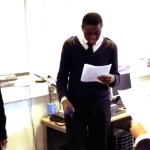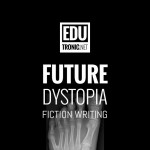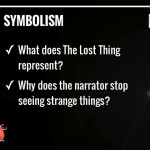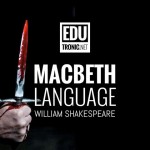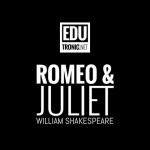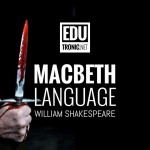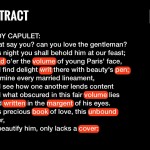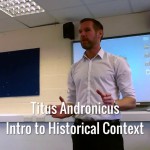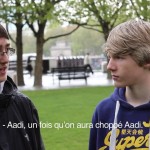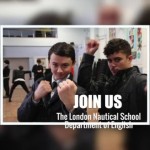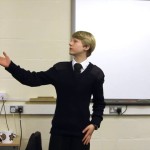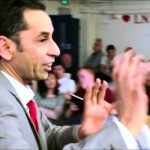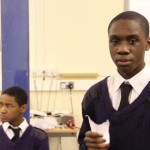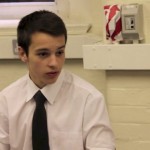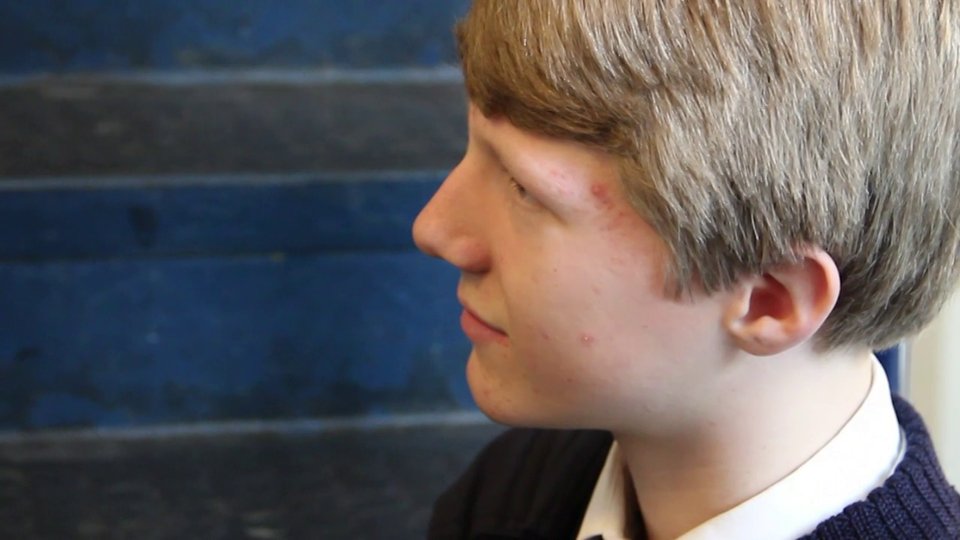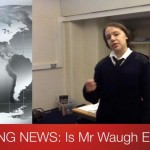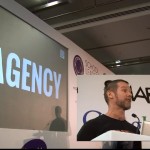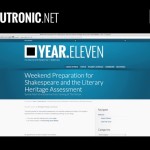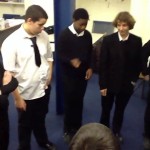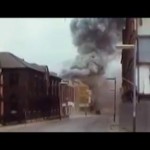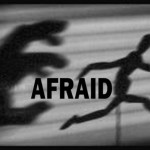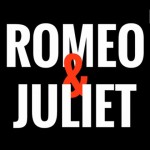This is a sample of the scenes you wrote and presented based on Act I, Scene i of Shakespreare’s Romeo and Juliet. Everyone was successful at maintaining the nuances of the meaning of the original script while adapting it for a contemporary ‘South London’ location. It’s a far cry from Verona, but not so far at all from Shakespeare’s own turf, after all.
You can see the whole learning sequence here: http://waugh9.edutronic.net/category/reading/shakespeare/
In The Crysalids, John Wyndham created a fictional world that expressed the contemporary anxiety about the nuclear threat posed by the Cold War arms race. Told from the point of view of a naive narrator, David, The Crysalids explores the post-apocalyptic landscape of strict religion, civil conflict and extraordinary genetic mutation.
This task supports students to work together to create their own future dystopia, replicating some of the key features of Wyndham’s “The Crysalids”, while updating it to represent a future where our current world has veered off course and the main character is dealing with the consequences.
Check out the class site with the learning programme from which this presentation arose
As part of the introduction to our Year 8 Macbeth Study, we’re looking, in acute detail, at some small excerpts from the main play.
Before we start reading. Before we know the plot. We’re putting the microscope on the language of shakespeare and what this might reveal. My proposition with this presentation is that Shakespeare has Macbeth use personification in this extract to reveal the extent to which Macbeth is blaming external forces for the choices he is about to make.
You can see the whole lesson sequence on the class site
A presentation to go with an examination of the specific dramatic elements in the first scene of Shakespeare’s Romeo and Juliet.
A presentation giving some pointers towards methods of improving the quality and sophistication of extended analytical and report writing for the students and teachers at the London Nautical School
This presentation incorporates the close analysis of a short excerpt from Macbeth, where Lady Macbeth reveals her dark resolve for the presence of the figurative language feature, Personification.
› Access the whole learning programme: waugh8.edutronic.net/macbeth-personification-2/
This presentation explores references to fate and the use of figurative language in Shakespeare’s Romeo and Juliet
› Access the whole sequence here: wp.me/p3PtNk-cB
As part of our exploration of Shakespeare’s Titus Andronicus the class is engaging in some research about the Elizabethan times and the context from which the play arose. Included here is a short video where I try to give the students some cues to the lines of inquiry they might wish to pursue and also, attached below, is the research questions with the students committing to following these attached.
Produced by a group of students from the London Nautical school who are participating in a film-making programme established by the Cinémathèque Française in Paris called ‘Le Cinéma, cent ans de jeunesse’ (Cinema, 100 years young)
This film was conceived, written, performed, filmed and edited by students. There were adults around, we filled out the forms, kept the batteries charged, mediated the conversations and did the boring post production.
The film premiered in Paris on The 7th of June.
In preparation for our first Annual Town Meeting, here is a set of short clips taken from the life of the London Nautical School Department of English
As part of their Romeo and Juliet project, students from the London Nautical School learned and presented dramatic monologues. This is Barnaby performing the eternal “But soft…”
As part of the London Nautical School internal Teachmeet, held on 15 April 2013, Mr Hyder Dastagir demonstrated how movement and roleplay can be used to demonstrate sophisticated chemistry principles. View the other presentations in the archive of this event › events.edutronic.net/outstanding/
Arising after their veiwing and analysis of the film “Hotel Rwanda” these Year 9 Students debated the issue of whether the UN was right to withdraw from Rwanda during the 1993 Genocide. Find out more on the class website: waugh9.www.edutronic.net/
As part of their preparation for the GCSE English Language Examination on Touching the Void, These students engaged in an improvised role-play set in a court of law. They explored in this context the premise that Simon Yates was being tried for manslaughter.
To find out more about this class and their learning programmes, head over to waugh11.www.edutronic.net/ for their class blog and links to the individual students’ work.
Remi Ojumu presents the results of his longitudinal theme study on the topic of “Overcoming Adversity”. Find out more about this Theme Study programme by visiting his class’ site at http://waugh11.www.edutronic.net/category/reading/theme-study/ or by visiting his own blog at the address remio7.student.edutronic.net/
These students are participating in a film-making programme established by the Cinémathèque Française in Paris called ‘Le Cinéma, cent ans de jeunesse’ (Cinema, 100 years young). These excerpts are samples of the “Film Exercises” the students complete as part of their investigation into a particular aspect of film theory. The boys also watch a wide range of films and clips as part of the process of building up to their “Final Film Essai” which is a short film that they take to the international festival held in Paris (Here is the film Essai from 2012)
This year the focus is on the Mis en Scene, so the excerpts you will see on Edutronic TV will all centre around the impact of the setting on the situation, and the effect of various changes in camera angle and position.
These students are participating in a film-making programme established by the Cinémathèque Française in Paris called ‘Le Cinéma, cent ans de jeunesse’ (Cinema, 100 years young). These excerpts are samples of the “Film Exercises” the students complete as part of their investigation into a particular aspect of film theory. The boys also watch a wide range of films and clips as part of the process of building up to their “Final Film Essai” which is a short film that they take to the international festival held in Paris (Here is the film Essai from 2012)
This year the focus is on the Mis en Scene, so the excerpts you will see on Edutronic TV will all centre around the impact of the setting on the situation, and the effect of various changes in camera angle and position.
As part of their journalism project, students from Year 8 experimented with creating video packages of their investigation into events by questioning primary sources.
More from the Journalism programme can be found here: http://waugh8.www.edutronic.net/category/journalism/
Presented to Teachmeet BETT on 31 January, 2013, to follow is a quick drive through some moments in the life of The Edutronic – with a focus on feedback.
Teachmeets are a grass-roots phenomenon where teachers get together and share elements of good practice, ideas and theories in a fast-paced, informal format. Presenters volunteer to speak for 2 or 7 minutes.
Presented to Teachmeet London on Tuesday 11 December, 2012, to follow is a quick drive through one moment in the life of The Edutronic – with a focus on feedback.
Teachmeets are a grass-roots phenomenon where teachers get together and share elements of good practice, ideas and theories in a fast-paced, informal format. Presenters volunteer to speak for 2 or 7 minutes – and this is the framework behind Chris Waugh‘s 2 minute presentation on The Edutronic Feedback Loop.
This visualisation was created by Soren as part of his initial approach to the poem, “Belfast Confetti” by Stevie Smith
The lesson materials surrounding this work can be found here: http://waugh11.www.edutronic.net/interpret-in-images/
This visualisation was created by Kamrul as part of his initial approach to the poem, “Hawk Roosting”
The lesson materials surrounding this work can be found here: http://waugh11.www.edutronic.net/interpret-in-images/
This visualisation was created by Alex as part of his initial approach to the poem, “Come On, Come back” by Stevie Smith.
The lesson materials surrounding this work can be found here: http://waugh11.www.edutronic.net/interpret-in-images/
The students were given 30 minutes to find a location, script and record a modern interpretation of a self-selected scene from Shakespeare’s Romeo and Juliet. This is what happened…
Find out more: http://waugh8.www.edutronic.net/category/shakespeare/
Completed in 30 minutes of class time, this documentary explores the ideas that Baz Luhrmann used to interpret the original script of Shakespeare’s Romeo and Juliet in his film Romeo + Juliet.
The class learning sequence this can be associated with can be found here: http://waugh8.www.edutronic.net/category/shakespeare/

